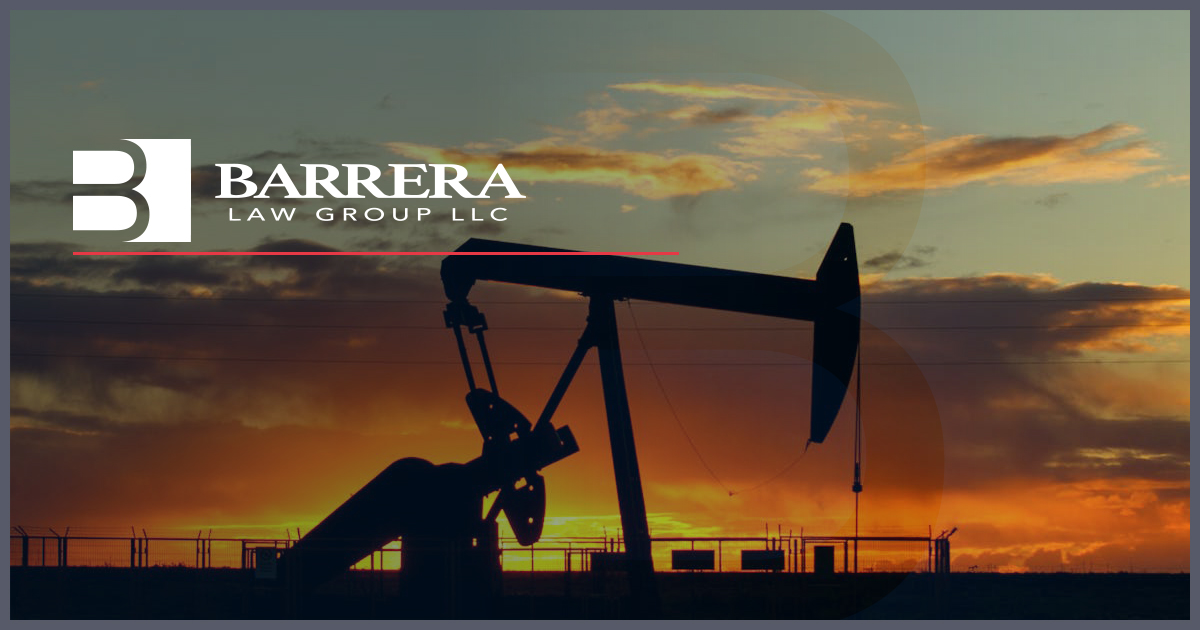
A study conducted by the Centers for Disease Control and Prevention (CDC) between 2015 and 2022 showed that 2.6% of workers (a number that equates to 2,101) who suffered severe injuries on the job during that time frame were oil and gas extraction (OGE) workers.
Another set of CDC data compiled between 2014 and 2019 showed 470 workers in the OGE industry during those years.
While we haven’t provided you with any comparative data to look at, these statistics should send a clear message that those employed in this work sector do face risks. Below, we’ll discuss what are the biggest threats to oilfield worker safety.
Most Common Contributors to Oil and Gas Workers’ Injuries and Deaths
In addition to being physically demanding jobs, those employed in oil fields are regularly exposed to not only toxic substances but also flammable ones. In addition, there is a lot of heavy equipment, machinery, tanker trucks coming and going, and work being performed at extreme heights on these job sites.
Given all this, it shouldn’t come as a surprise that the most notable dangers oilfield workers face include:
- Auto accidents: According to the Occupational Safety and Health Administration (OSHA), 40% of all workers who lose their lives on the job in the oil and gas industry do so in highway crashes. The government agency contends that these accidents likely occur because any crude oil extracted has to be transported from worksites. Workers are regularly traveling these long distances to and from work as well.
- Falls: While oil rigs at sea can be several thousand feet high, those on oil fields are generally just around 15 feet. While a fall from that height may be survivable, it’s not uncommon for workers to suffer torn ligaments or tendons, bone fractures, spinal cord injuries, and other impairments when these slips and falls occur on what are often oily surfaces.
- Struck-by or caught-in or between incidents: Between workers, truckers, supervisors, and workers, there can be a lot of people coming and going from job sites. Unless they’re all on the lookout for one another, it’s possible for a truck driver to strike someone who enters their blind spot, trapping them in between an inanimate object and the truck, causing crush injuries. With the amount of high-powered machinery around, it’s also possible for a worker to get a limb caught in a machine, often leading to an amputation.
- Toxic substance exposures: Those employed in the oil and gas industry not only work atop rigs, but also around storage tanks, excavated pits, and other confined spaces. Being in close quarters with hazardous chemicals puts workers at risk of asphyxiation, inhalation injuries, and respiratory illnesses.
- Burns and fires: A variety of factors, including natural gas leaks, human error, improperly maintained or defective equipment, insufficient venting, and others, can trigger explosions that, when coupled with the fact one’s dealing with flammable substances, can easily ignite, causing a blaze. According to earlier referenced CDC statistics, explosions accounted for 14% of OGE worker fatalities between 2014 and 2019.
- Electrocution: There can be hydraulic, electrical, mechanical, and other potentially hazardous energy sources on oil fields, the combination of which may make a worker vulnerable to suffering electrocution, which can cause nerve damage, burns, and even cardiac arrest, leading to a person’s death.
Other incidents that have the potential of hurting an OGE worker or claiming their life per OSHA include high-pressure lines and equipment and ergonomic hazards.
What to Do If You’ve Suffered Injuries on an Oil Field
Reporting your injury incident and seeking medical attention for the harm you suffered is critical.
Your report should be put in writing to ensure there’s no confusion about what was said. Also, you should see a doctor even if you don’t believe you’re hurt. You don’t want there to be a serious issue going on in your body and only find out about it sometime later. Waiting can prove to be a deadly choice.
Your next step should be reaching out to a lawyer who regularly handles oilfield injury cases like yours.
Our attorneys here at Barrera Law Group regularly represent oil and gas workers who’ve been hurt like you.
It costs you nothing to discuss your injuries with us or for us to share what rights our state’s laws afford you to recover compensation for your injuries, lost wages, and other related costs. So, reach out to us now if you’ve suffered harm because of one of the above-referenced biggest threats to oilfield worker safety.
We won’t charge you unless we collect a settlement from the liable party in your case.






